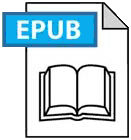DIVERSIFICATION IN CRUDE OIL AND OTHER COMMODITIES:
A COMPARATIVE ANALYSIS
Ahmad Monir Abdullah1* and Abul Mansur Mohammed Masih2
1Business School, Universiti Kuala Lumpur, Bangunan Yayasan Selangor,
Kampung Baru, 50250 Kuala Lumpur, Malaysia
2INCEIF, The Global University of Islamic Finance,
Lorong Universiti A, Universiti Malaya, 59100 Kuala Lumpur, Malaysia
*Corresponding author: ahmadmonir@unikl.edu.my
ABSTRACT
An understanding of how volatilities of and correlations between commodity returns change over time including their directions (positive or negative) and size (stronger or weaker) is of crucial importance for both the domestic and international investors with a view to diversifying their portfolios for hedging against unforeseen risks. This paper is an humble attempt to add value to the existing literature by empirically testing the ‘time-varying’ and ‘scale dependent’ volatilities of and correlations of the sample commodities. Particularly, by incorporating scale dependence, it is able to identify unique portfolio diversification opportunities for different set of investors bearing different investment horizons or holding periods. In order to address the research objectives, we have applied the vector error-correction test and several recently introduced econometric techniques such as the Maximum Overlap Discrete Wavelet Transform (MODWT), Continuous Wavelet Transform (CWT) and Multivariate GARCH – Dynamic Conditional Correlation. The data used in this paper is the daily data of seven commodities (crude oil, gas, gold, silver, copper, soybean and corn) prices from 1 January 2007 until 31 December 2013. Our findings tend to suggest that there is a theoretical relationship between the sample commodities (as evidenced in the cointegration tests) and that the crude oil, gas, gold and copper variables are leading the other commodities (as evidenced in the Vector Error-Correction models). Consistent with these results, our analysis based on the application of the recent wavelet technique MODWT tends to indicate that the gold price return is leading the other commodities. From the point of view of portfolio diversification benefits based on the extent of dynamic correlations between variables, our results tend to suggest that an investor should be aware that the gas price return is less correlated with the crude oil in the short run (as evidenced in the continuous wavelet transform analysis), but due to its high volatility, it offsets its benefit of diversification in the long run and that an investor holding the crude oil can gain by including corn in his/her portfolio (as evidenced in the Dynamic conditional correlations analysis). Our analysis based on the recent applications of the wavelet decompositions and the dynamic conditional correlations helps us unveil the portfolio diversification opportunities for the investors with heterogeneous investment horizons or holding stocks over different periods.
Keywords: commodity, Maximum Overlap Discrete Wavelet Transform (MODWT), Continuous Wavelet Transform (CWT), MGARCH- DCC, diversification, causality
Full text  EPUB
EPUB 